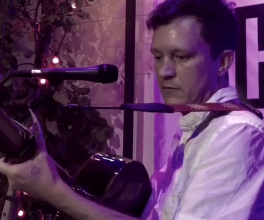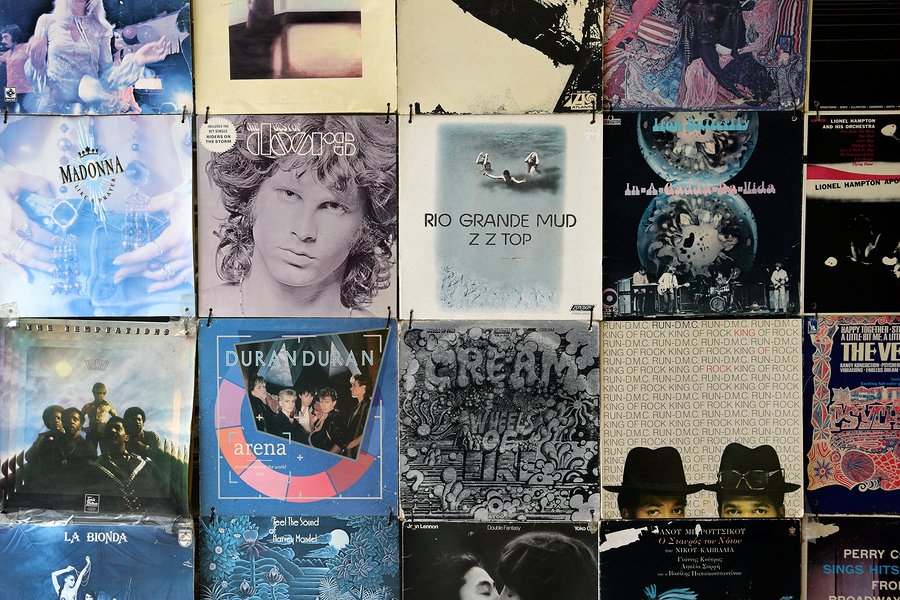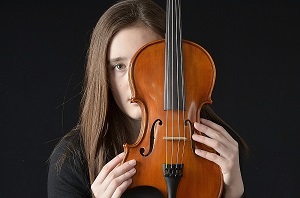Last Friday, I read a breathless review of Lady Gaga’s new single, “Perfect Illusion,” that felt like it was written in exclamation marks. The cause of this ALL CAPS praise of Gaga? A key change. The review did its job: I immediately listened to “Perfect Illusion.” Why don’t you do the same?
The rock music step up
The main bass riff of “Perfect Illusion” plays notes in an F# minor scale: F#→G#→D→E. At about 1:51, Gaga moves the riff up one step to G#. This is a pretty standard rock move. I’ve called it a modulation for the longest time and only recently been corrected on that point. It is a key change because it is not merely modulating around a chord in the first part of the song.
What makes Gaga’s key change so effective is the music that it follows in the song. “Perfect Illusion” follows a pretty standard verse, chorus, verse, chorus, bridge, chorus arrangement. Like a lot of popular dance music, the main line of the song doesn’t change from verse to chorus. The bass keeps pumping that F# riff. What separates the verse from the chorus is the vocal melody and the other instruments that join. When Gaga hits the bridge though, the bass drops out for eight measures before descending down the F# minor scale: F#→E→D→C#. That’s when the key changes hits.
The key change into the G# riff is just a step above the F# riff that drives most of the song. But because it hits after the descending riff of the bridge, it feelslike Gaga just jumped an entire fifth up the scale. That’s why it sounds so dramatic.
Check out a similar move from the Ramones. In “Glad To See You Go,” the main riff really just jumps one step from D to E.
The first verse and chorus are a I-IV-V in D (meaning the chords are D, G, A). The last verse and chorus are in E (E, A, B chords). But in between, the Ramones play one of their chord-riffy bridges starting on a C chord and ending on a C to G to B line.
That C really marks a key change. (Or it just announced that, unbeknowst to us, we’ve been in D minor.) To make sense of it, I’d say the bridge feels like it’s in G but I’ll let smarter people figure that out. All I want to illustrate is that when the verse comes back in on the E, it’s way punchier than if they’d simply shifted up a step from the D.
To hear what a difference this makes, listen to the key change in “I Wanna Be Sedated” in which the Ramones merely shift the entire song up one step after a short “solo.”
Though it’s cool for the song, it is decidedly less dramatic. In “Sedated,” the key change doesn’t shift the mood of the song. It just distinguishes the second half from the first. The Ramones’ songs were so short and simple that the little touches like this mattered a lot. It’s how they applied those touches that added drama or urgency that makes the difference in the feel of the song.
Multiple changes in gospel roots
Kevin Fallon, the author of the Daily Beast feature linked above, also exclaims that his soul leaves his body when Beyoncé does her last key change in “Love on Top.”
“Love on Top” takes a completely different approach to a key change than “Perfect Illusion” and the Ramones. The arrangement of “Love on Top” is verse, b-section, chorus, chorus, chorus, chorus, chorus. Each of the last four choruses changes keys. The effect is different than Gaga’s. Rather than intensify the emotion of the chorus with the shift, Beyoncé raises the mood of the song with each successive key change. It changes the way we experience the song. Because it’s largely one part repeated in higher keys, the time of the song passes more quickly. (To me, it feels shorter than “Perfect Illusion,” when it is actually slightly longer.)
Want to hear a really random example of this same effect? It’s what Helen Reddy does in “Delta Dawn” (don’t ask me how I immediately knew this):
Reddy does a chorus and verse in one key and then repeats the chorus several times changing keys twice more.
This move probably has its roots in gospel music since it is repeated throughout country and soul music. Another example I love of the multiple key changes is in Johnny Cash’s “The Old Account Was Settled Long Ago.”
One thing that makes the key changes here so great is that each verse is sung by a different singer — Johnny, June, and I believe, Carl Perkins (though the Statler Brothers are on this performance as well). The song shifts up a step with each new singer. It gives the song a similar rousing spirit to what we hear in Beyoncé’s song. Each change lifts us higher.
Such a little thing can make such a big difference
In the examples above, we’ve heard how a step up can make a huge impact when it follows an interesting bridge or how successively changing keys can raise the mood of the song. But my absolute favorite key change happens in one of my favorite songs, “My Love” by Petula Clark.
The song punches us as soon as it starts with its urgent chorus and big bass drum (go find this on vinyl, trust me). Because the chorus starts on a D chord and the subsequent verse on an A chord, there is a tonal shift when Petula goes into the verse, but both the verse and chorus are in the same key. The song arrangement goes chorus, verse, chorus, then changes keys before another verse, chorus, chorus.
When she changes keys, Petula doesn’t even go up a whole step, just a half step to anchor the rest of the song in Bb. Just like Gaga and the Ramones, it’swhen she does it that makes this slight change sound huge. After the second chorus, there is a slight interlude before she sings a verse in the new key. Because she goes from chorus to verse in the intro of the song, switching the chord over which she sings, we’re prepared for something similar here but when she comes in on a different chord, it’s that much more interesting.
Petula is not doing a great dramatic leap in the notes she sings but in the expectations she has set up and knocked down.
I have to note that the simple staging of this performance is effective in the same way. Petula crosses stage-left and the camera goes to a wide shot when she comes out of the first chorus to sing the first verse. She stays there for the second chorus. During the next interlude, she crosses to stage-right and the camera zooms in. So just as that subtle key change happens, the visual, too, subtly draws us into the song.
(Furthermore, I would LOVE to hear this song with the strings stripped from it so it’s just drums, bass, horns, and Petula.)
The mother of all leaps
But if subtle isn’t your bag, you can go the Bon Jovi route.
The reason the key change in “Livin’ on a Prayer” sounds so dramatic is because it is just a ridiculous leap. In the last chorus, they jump an entire minor third up from the previous choruses.
That’s one way to do it. Where other examples here set the stage for a key change in interesting musical ways, Bon Jovi blasts subtlety out the window. They just go for it.
(My friend / music professor / and inadequately-compensated editor of my musical theory articles, Todd Kemp notes that the other thing that makes Bon Jovi’s key change so dramatic is that the pause before the leap only has three beats. Count it.)
The author of the Daily Beast piece that sent me running to YouTube to hear Gaga’s life-affirming key change rightly notes that one reason key changes stand out in popular music is because we don’t hear them that often. This struck me as strange when I read it because, obviously, much of the music I listen to features key changes. So it’s interesting to note the musical roots of those key changes as well as what they accomplish.
Not everyone has the panache and high hair to pull off a “Livin’ On A Prayer” shrieker like the Jove can. And few possess the sly charm of Petula Clark who can manipulate our expectations without us realizing it. Neither do we have the vibrance of Beyoncé or the lungs of Gaga. We can take from their examples the techniques that make their key changes so musically effective and apply those to our own songs.
Music is often about delivering and manipulating emotion. It’s important to see how we do that without words. A smart key change can earn more emotion than a well-crafted lyric.












































Comments
No comment